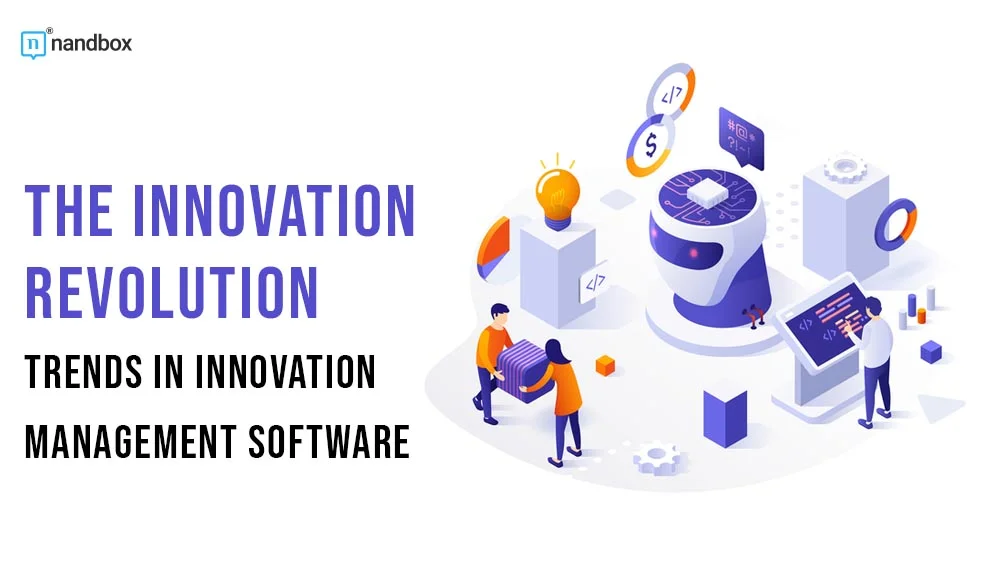In today’s changing business world, the innovation revolution is no longer a buzzword but a necessity for survival and growth. To stay competitive, organizations must continuously evolve and adapt to changing market conditions, customer preferences, and technological advancements. Innovation management software has emerged as a critical tool for businesses to streamline their innovation processes, enhance collaboration, and drive sustainable growth. In this article, we will explore the latest AI & ML trends in innovation management software that are reshaping the way companies innovate and remain at the forefront of their industries.
Artificial Intelligence and Machine Learning Integration
Artificial intelligence (AI) and machine learning (ML) have become integral components of innovation management software. These technologies empower organizations to extract valuable insights from vast datasets, identify trends, and make data-driven decisions. AI-powered algorithms can analyze market trends, customer feedback, and internal data to uncover opportunities for innovation. Moreover, machine learning models can predict the success of new ideas and recommend the most promising projects to pursue.
By harnessing AI and ML, innovation management software assists in prioritizing innovation initiatives, optimizing resource allocation, and reducing the risk of failure. It enables organizations to make informed decisions about which ideas to pursue and which to shelve, ultimately enhancing the efficiency and effectiveness of their innovation processes.
Collaborative Innovation Platforms
Innovation thrives when diverse perspectives and expertise come together. Collaborative innovation management solutions are rising to prominence as organizations recognize the importance of harnessing the collective intelligence of their employees, customers, and partners. These platforms facilitate open idea generation, brainstorming, collaboration, and geographical boundaries.
Employees can submit ideas, comment on others’ proposals, and collaborate on innovation projects in real time. Collaborative innovation platforms cultivate an innovation culture within organizations, valuing and listening to every voice. This inclusivity not only encourages creativity but also improves employee engagement and retention.
Agile Innovation Frameworks
Agility now extends beyond software development. Innovation management software is now incorporating agile frameworks to accelerate the innovation process. Agile methodologies like Scrum and Kanban are adapting to manage innovation projects efficiently.
Agile innovation frameworks enable teams to work iteratively, respond to changing market conditions, and pivot quickly when necessary. This approach reduces time-to-market and allows organizations to test and refine their ideas before committing significant resources. By integrating agile principles into innovation management software, companies can foster a culture of experimentation and adaptability, which are essential for sustained innovation success.
Idea Crowdsourcing and Gamification
To tap into the collective creativity of a broader audience, many organizations are embracing idea crowdsourcing and gamification within their innovation management software. Crowdsourcing invites external stakeholders, such as customers and partners, to contribute ideas and insights.
Gamification elements, such as leaderboards, rewards, and challenges, make the innovation process more engaging and motivating. Participants are incentivized to participate actively in generating and refining ideas. This approach not only broadens the pool of innovative ideas but also enhances stakeholder engagement and loyalty.
Analytics-Driven Decision-Making
Innovation management software increasingly embraces a data-driven approach. Advanced analytics tools, embedded within these platforms, enable organizations to comprehensively track and measure their innovation efforts. They allow the definition and monitoring of Key Performance Indicators (KPIs), offering valuable insights into the effectiveness of innovation initiatives.
Through analyzing data on project progress, resource allocation, and ROI, organizations can make informed decisions about where to allocate resources and how to adjust strategies. This data-driven methodology ensures that businesses align innovation efforts with business objectives, continuously optimizing for maximum impact.
Integration with Existing Tools
Seamless integration with existing software tools is another crucial trend in innovation management software. Organizations rely on a variety of software applications for project management, communication, and data analysis. To enhance efficiency and user adoption, innovation management software must integrate seamlessly with these existing tools.
This integration streamlines workflows, eliminates data silos, and ensures that innovation initiatives are closely aligned with broader organizational goals. Leveraging a skills management platform is essential for optimizing the human capital aspect of innovation, ensuring that the right skills are deployed for each project’s success. Whether it’s integrating with project management software like Asana or communication tools like Slack, the ability to work harmoniously with existing software ecosystems is a key consideration for businesses evaluating innovation management solutions.
Conclusion
The innovation revolution is well underway, and innovation management software is at the forefront of this transformative wave. By embracing AI and ML, encouraging collaborative environments, and adopting agile frameworks. By encouraging crowdsourcing and gamification and prioritizing data-driven decision-making and integration, organizations are positioning themselves for sustainable growth and competitive advantage.
In today’s dynamic business environment, innovation is not an option but a strategic mandate. The trends in innovation management software discussed in this article, which can be accommodated by no-code developers Fliplet, are shaping the way companies approach innovation, making it more accessible, efficient, and effective. As organizations continue to adapt to the ever-evolving market landscape, those that leverage these trends will be better equipped to lead the innovation revolution and secure their place as industry leaders.




